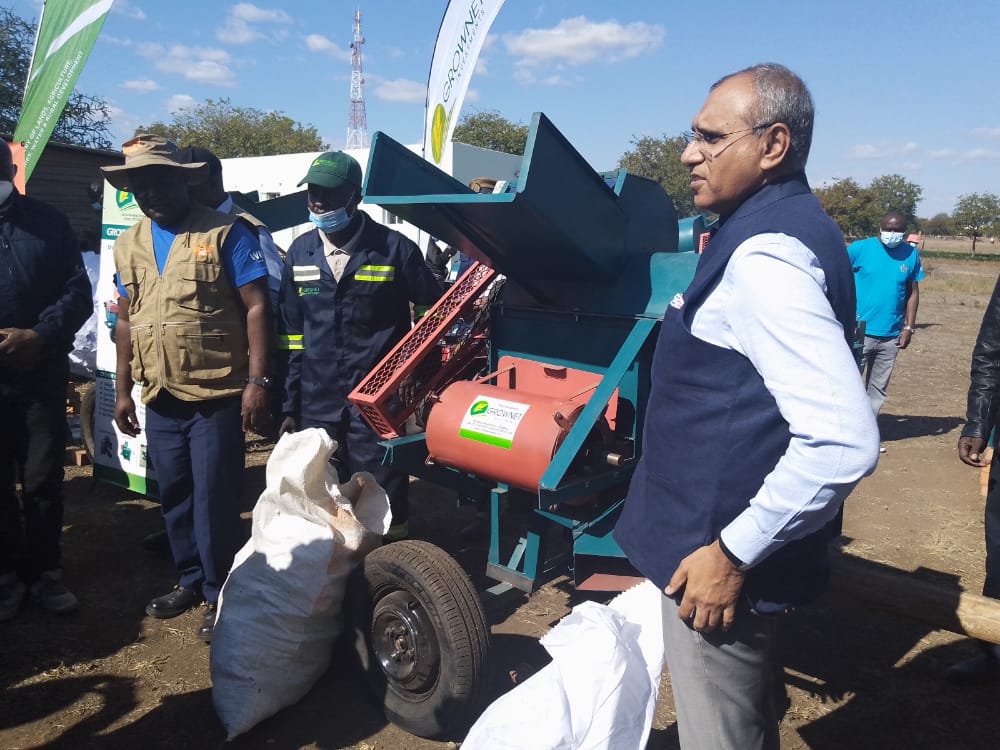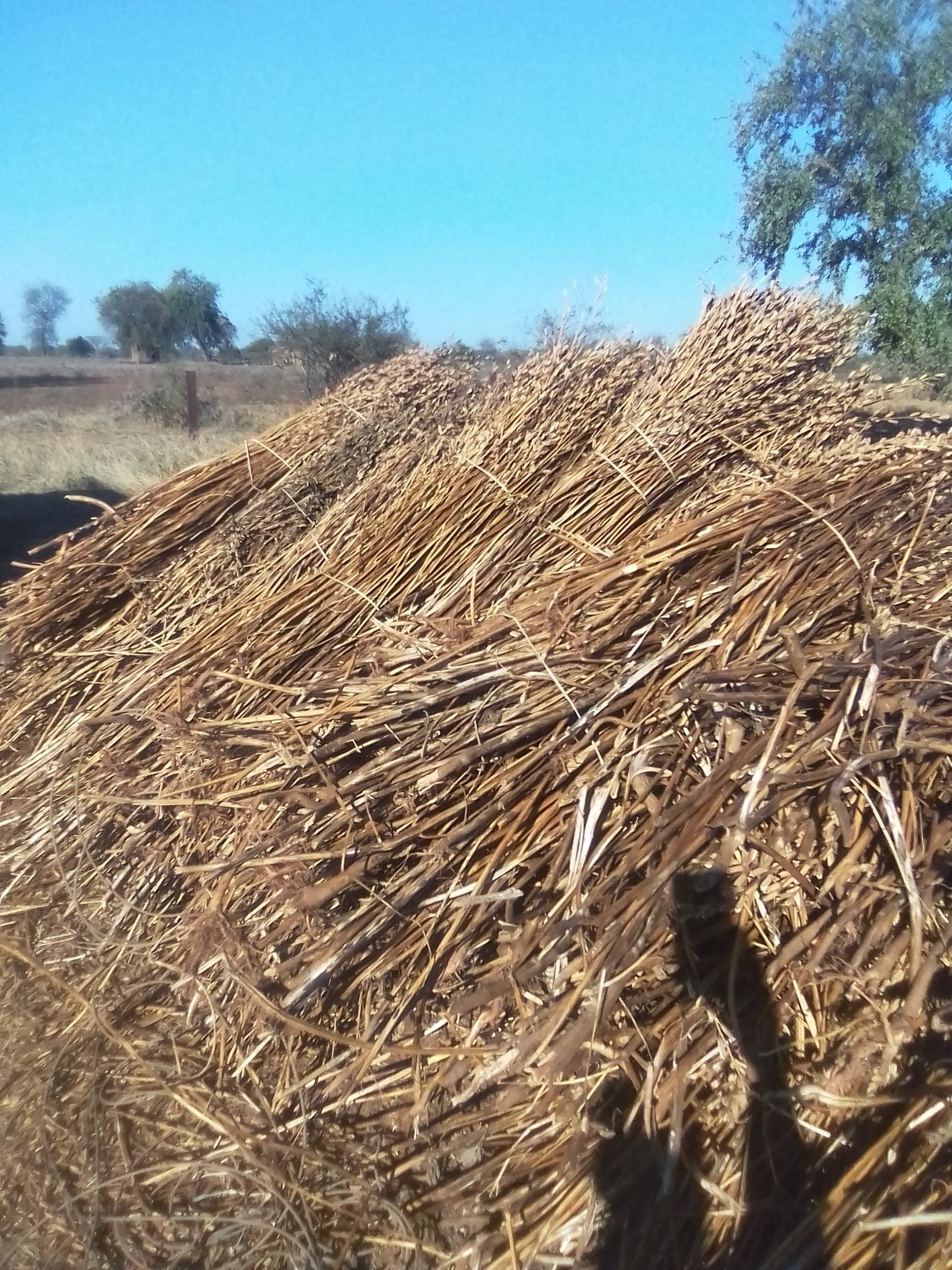Patrick Chitongo
A donation of 5 threshing machines by the World Food Programme, funded by the of India, to the villagers at Mhlanguleni in Chikombedzi, South of Chiredzi, fits so well this year, considering that the drought prone, detached and inaccessible district, this year produced small grains more than any other district in Zimbabwe.
The government of India, through it’s ambassador Vuray Kanduja, handed over the 5 machines to small grain farmers in Ward 4, 9, 10, 11 and 25.
Cumulatively, the Chikombedzi farmers produced 70 166 tonnes of Sorghum and 34 632 Millet.

The farmers received inputs as donation from the World Food Programme (WFP), as a resilience measure, thereby reducing the households on WFP and Government Food Assistance Programmes.
The scope is to produce the unpopular, but viable small grain crops in low rainfall areas, as to mitigate hunger.
Chiredzi is followed by Mangwe district, where WFP is also supporting the same scheme.
The organisation (WFP) initially trained 21 Extension workers and 2 572 farming villagers.
These were trained in pre and post harvesting and storage technics to preserve their produce.

Metal Silo model of food storage was also introduced to farmers. This is where farmers can use tin material to construct durable granneries, unlike the traditional ones of pole and dagga.
10 such Silos were also donated to the farming villagers.
The new storage system is environment friendly, as it reduces the cutting down of trees and land degradation.
Three distinct farmers, who were however not paraded or recognized during the handover ceremony of the machines at Mhlanguleni business centre on Thursday last week, Stephen Chirove, Vimbai Masawi and Norman Mhere, are the highest producers of sorghum in the district.
Chirove bagged 83 tonnes, Masawi coming second with 77 tonnes while Mhere got 53 tonnes.
The farmers utilised an average of 15 hectares this season.














